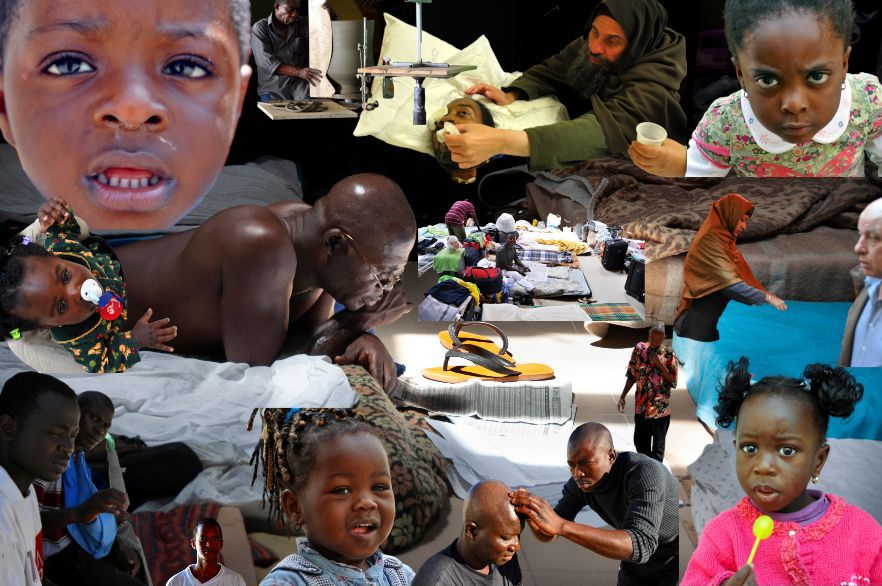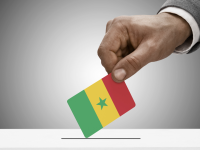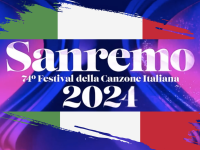To be a child in Nigeria is both beautiful and satisfying to a large extent…

Mediterranean Multiculturalism, between millennia of history and migratory flows
The Mediterranean has always been a sea that, rather than dividing peoples, has brought them closer together. It has been a bridge between peoples of different religions, cultures and languages, which has always invited – and sometimes forced – them to interact and get to know each other, for better or for worse.
It is the stage for millennia of history that, at a time when the Global South is increasingly fluid, changeable and itself the cause of change, opens up to a future marked by rapid and profound transformations.
Since antiquity, the migrations of Mediterranean peoples from one coast to another have characterised the geopolitical decisions of the various states bordering the ‘Mare Nostrum’ with serious problems for the reception and for the new generations of non-EU citizens who, after a long and harrowing journey, land in Europe hoping for a better future and often get shipwrecked along the way.
NGOs, national and international institutions, and even Pope Francis, who in Lesbos in 2021 asked to “Stop this shipwreck of civilisation, let the Mediterranean no longer be a cold graveyard without tombstones” try not to turn their backs on reality, which is plural and calls for greater solidarity.
This is why Pope Francis asks for an end to “the continuous rebounding of responsibility, and he repeats looking at them, as he did in Cyprus, your faces, your eyes ask us not to turn away, not to deny the humanity that unites us, to make your stories our own and not to forget your dramas”.
According to an analysis by Italian sociologist Prof. Maurizio Ambrosini, known for his studies on migration, the decades-long political problem of migration in the Mediterranean is still an unresolved issue and the repeated political crises resulting from the arrivals of asylum seekers, the dramatic conditions of their journeys and the humanitarian tragedies that befall them have contributed to forming a widely shared representation of migration echoed in public communication and political discourse.
According to a report presented by UNHCR and the MMC, thousands of refugees and migrants suffer serious human rights violations while travelling to the Mediterranean coast of Africa and then reaching Europe, including Lampedusa and Italy.
This ethical photo collage entitled ‘Mediterranean Multiculturalism’ has been developed over the years in Palermo, the capital of Sicily, which is often the first to receive migratory flows. In many cases, refugees are taken in by Foundations, Associations, Missions and national and international third sector institutions.
It is the stage for millennia of history that, at a time when the Global South is increasingly fluid, changeable and itself the cause of change, opens up to a future marked by rapid and profound transformations.
Since antiquity, the migrations of Mediterranean peoples from one coast to another have characterised the geopolitical decisions of the various states bordering the ‘Mare Nostrum’ with serious problems for the reception and for the new generations of non-EU citizens who, after a long and harrowing journey, land in Europe hoping for a better future and often get shipwrecked along the way.
NGOs, national and international institutions, and even Pope Francis, who in Lesbos in 2021 asked to “Stop this shipwreck of civilisation, let the Mediterranean no longer be a cold graveyard without tombstones” try not to turn their backs on reality, which is plural and calls for greater solidarity.
This is why Pope Francis asks for an end to “the continuous rebounding of responsibility, and he repeats looking at them, as he did in Cyprus, your faces, your eyes ask us not to turn away, not to deny the humanity that unites us, to make your stories our own and not to forget your dramas”.
According to an analysis by Italian sociologist Prof. Maurizio Ambrosini, known for his studies on migration, the decades-long political problem of migration in the Mediterranean is still an unresolved issue and the repeated political crises resulting from the arrivals of asylum seekers, the dramatic conditions of their journeys and the humanitarian tragedies that befall them have contributed to forming a widely shared representation of migration echoed in public communication and political discourse.
According to a report presented by UNHCR and the MMC, thousands of refugees and migrants suffer serious human rights violations while travelling to the Mediterranean coast of Africa and then reaching Europe, including Lampedusa and Italy.
This ethical photo collage entitled ‘Mediterranean Multiculturalism’ has been developed over the years in Palermo, the capital of Sicily, which is often the first to receive migratory flows. In many cases, refugees are taken in by Foundations, Associations, Missions and national and international third sector institutions.
The principle of photojournalism is to express oneself with images rather than words. Storytelling and documentary photography highlight the ethno-anthropological and humanitarian characteristics of a place, in this case Palermo, with the tools of direct research and with “images that, like pieces of a mosaic, try to offer a possible harmonious and exhaustive composition” that is the stage for millennia of history; the South of Europe, a bridge to Africa.
Daily life in Palermo is a continuous multicultural flux where human rights are guaranteed through structures such as the Mission of Hope and Charity founded by the lay friar Biagio Conte, who for thirty years has been helping the needy, political refugees of all ages and backgrounds.
Orphanages and kindergartens have been set up in the city’s working-class and historic neighbourhoods for non-EU children who grow up in western society and can bring about cultural changes over time in host states such as Italy and Europe.
On the 90th World Migrant and Refugee Day in 2004 with the theme “Migration in a Vision of Peace” Pope John Paul II drew public attention to forced human mobility due to war and violence, terrorism and oppression, discrimination and injustice, unfortunately ever present in the daily news. We are, unfortunately, getting used to seeing the disconsolate wandering of displaced persons, the desperate flight of refugees, the landing by any means of migrants in richer countries in search of solutions for their many personal and family needs. Here then is the question that raises a very important question for him on the subject of migration: how can one speak of peace when there are constant situations of tension in not a few regions of the earth? And how can the phenomenon of migration contribute to building peace among people?
If the gradual integration of all migrants is encouraged, while respecting their identity and safeguarding the cultural heritage of the populations that receive them, there is less risk of immigrants becoming concentrated and forming veritable ‘ghettos’, where they isolate themselves from the social context, sometimes even ending up feeding the desire to gradually conquer the territory.
When ‘diversities’ meet and integrate, they give rise to a ‘conviviality of differences’. Values common to every culture are rediscovered, capable of uniting and not dividing; values rooted in the identical human humus. This helps the unfolding of a fruitful dialogue to build a path of mutual tolerance, realistic and respectful of the peculiarities of each one. Under these conditions, the phenomenon of migration helps to cultivate the ‘dream’ of a peaceful future for all humanity.
Daily life in Palermo is a continuous multicultural flux where human rights are guaranteed through structures such as the Mission of Hope and Charity founded by the lay friar Biagio Conte, who for thirty years has been helping the needy, political refugees of all ages and backgrounds.
Orphanages and kindergartens have been set up in the city’s working-class and historic neighbourhoods for non-EU children who grow up in western society and can bring about cultural changes over time in host states such as Italy and Europe.
On the 90th World Migrant and Refugee Day in 2004 with the theme “Migration in a Vision of Peace” Pope John Paul II drew public attention to forced human mobility due to war and violence, terrorism and oppression, discrimination and injustice, unfortunately ever present in the daily news. We are, unfortunately, getting used to seeing the disconsolate wandering of displaced persons, the desperate flight of refugees, the landing by any means of migrants in richer countries in search of solutions for their many personal and family needs. Here then is the question that raises a very important question for him on the subject of migration: how can one speak of peace when there are constant situations of tension in not a few regions of the earth? And how can the phenomenon of migration contribute to building peace among people?
If the gradual integration of all migrants is encouraged, while respecting their identity and safeguarding the cultural heritage of the populations that receive them, there is less risk of immigrants becoming concentrated and forming veritable ‘ghettos’, where they isolate themselves from the social context, sometimes even ending up feeding the desire to gradually conquer the territory.
When ‘diversities’ meet and integrate, they give rise to a ‘conviviality of differences’. Values common to every culture are rediscovered, capable of uniting and not dividing; values rooted in the identical human humus. This helps the unfolding of a fruitful dialogue to build a path of mutual tolerance, realistic and respectful of the peculiarities of each one. Under these conditions, the phenomenon of migration helps to cultivate the ‘dream’ of a peaceful future for all humanity.




